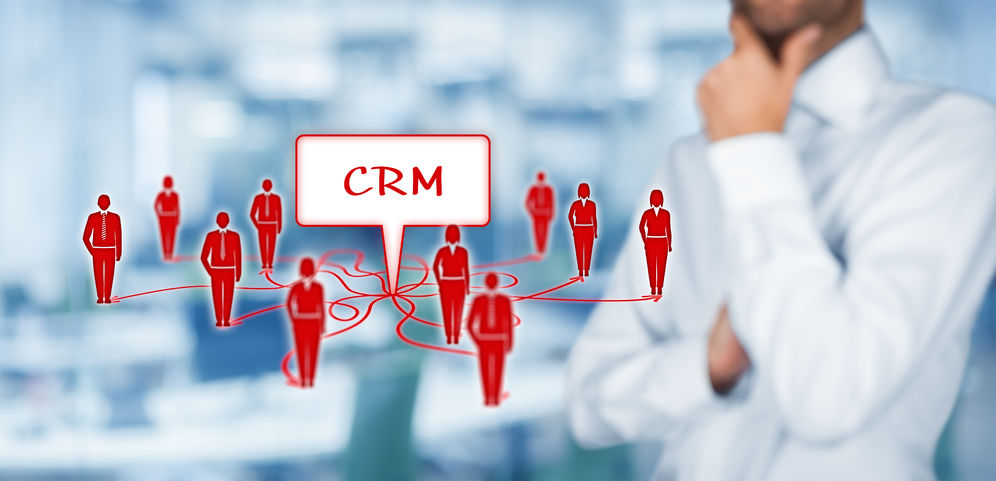For businesses of all sizes, positive customer experiences drive success.
Not only do exceptional customer experiences build brand loyalty — and ultimately help grow your bottom line — but customers with positive brand experiences are more likely to share those experiences with others.
The better customer experience you create, the more you feed into a loop of business growth. In a 2019 Salesforce survey, 84% of respondents indicated a good customer experience is as important as product quality or services. And in another survey by American Express, 90% of customers said customer service affects their decisions to do business with a company.
With these trends, it’s no secret that businesses are constantly on the hunt for great ways to build quality customer experiences.
Traditionally, building customer loyalty and brand relationships were time-consuming and tied up resources such as your team members. Whether the sales lead was a website click or in-store browsing, getting customer information and facilitating a lead to sale created challenges most often dependent on a person-to-person relationship.
But today, innovative technology is changing the way businesses build customer relationships and improve customer experiences. Customer Relationship Management (CRM) tools are increasingly crucial for creating and maintaining exceptional customer experiences — from sales lead to returning buyer.
If you haven’t already adopted one, now is the time to explore how a CRM will help you improve sales efficiencies, free up staff time, build a positive brand experience, and keep customers happy — and ultimately returning — to do business with you.
First, What’s a CRM?
A CRM solution is a technology-based tool that helps you manage all of your customer contact details — not just name, address, email, and telephone numbers, but also customer notes, purchase information, customer service issues, and where they are within your sales journey.
However, CRM is more than just technology. It’s also a philosophy of how you do business. How you treat your customers — your goals for exceptional customer experiences — are also important for CRM.
Now, let’s take a look at how this philosophy, supported by technology, will improve how you manage customer relationships:
Quality, Centralized Data
If you’ve been in sales awhile, you may remember when sales lead information lived either on a salesperson’s desk, in a hand-scrawled notebook, or on a personal computer.
Moving a sales lead from the salesperson to your core systems, like maybe a spreadsheet, meant your sales team member had to sit down at a desk and make a manual entry (when or if there was time), often creating a gap between initial customer contact and follow up.
Those manual entries also created opportunities for human error. One flipped number on a phone entry or misspelled name could result in immediate disengagement with your lead.
Today, a CRM eliminates a lot of those manual entries. By linking up with your existing systems — for example your website, customer service centers, brick-and-mortar stores, and marketing channels — you can quickly and more accurately obtain essential data from your customers as they engage with your company.
All of this data can then be stored in one central location — your CRM — where all team members can see how well your sales processes work and what’s needed to move a lead further through your buyer’s journey.
Good data means you have a great foundation to build your customer experiences.
Automated Communications
Your teams are busy and constantly on the go. If you have existing processes — for example, sending a free gift or discount to customers on their birthday — a CRM can automate this process for you so your employees don’t have to set manual calendar reminders to follow up.
Automation can also help you respond to customer inquiries quicker, giving them valuable information before you lose them to a competitor. According to a HubSpot survey, 90% of customers say an immediate response is important, and about 60% want an immediate response within 10 minutes or less.
A quality CRM should help your team use automation to quickly respond to common customer inquiries, whether that’s a first-touch point welcome or follow-up to a customer service need.
Personalized Communication
Have you ever received a marketing message from a company that clearly targets someone who’s not you? What a put-off!
Sending the wrong message to the wrong customer at the wrong time can damage your brand and move your customer further away from a purchase with you and toward a more attentive competitor.
CRMs can help you clear up messaging missteps by allowing you to segment your customer database to deliver accurate, timely, and relevant information to your customers.
Your CRM should also help you create and maintain personalized communications with your leads. Did you know that a personalized greeting, for example including your lead’s name from your CRM into an email, can increase your transaction rate nearly 6 times? Further, a simple inclusion of your contact’s name in an email subject line can increase your open rate by almost 30%.
CRMs can fuel personalized communications with your customers, making them feel valued, and building on a positive experience with your brand.
Brand-Focused, Approved Messaging
As we mentioned earlier, if you rely more on individuals to create and build customer experiences with your brand than a CRM, your sales process and related communications can get muddled. That means there are more chances for errors such as typos or comments that don’t align with your company goals.
Your CRM can help your team adopt and use standardized, brand-approved messaging.
For example, let’s say your company has a standard welcome package for all new customers. Instead of letting each individual sales member craft his or her own message before sending the welcome package, they can use your CRMs automated components to pull up a pre-approved message to ensure that touchpoint perfectly aligns with your brand’s customer experience.
You can even use automation to trigger sending that welcome package so your team doesn’t have to be involved. Want to know which of your customers have been sent that welcome package and when? Your CRM can track that data for you.
Feedback Loop
Giving your customers what they want, when they want it is an awesome brand-building experience your CRM can facilitate. But, maybe even more importantly, your CRM can also create a feedback loop where you’re not only communicating outwardly to your customers, but you’re also getting (and responding to) their feedback. Listening to your customers’ wants and responding to their needs will continue to build your customer experience in a positive way.
Sales Journey Insight
If you’re responsible for your sales’ team success, you know how frustrating disparate sales processes and systems can be. Without a CRM, you often have to track your sales team down or scroll through hundreds of fields on a spreadsheet to see your sales progress.
CRMs with reporting and analytics change everything. aACE’s CRM, for example, gives you instant insight into:
- Goals
- Customer activities
- Needed next steps
- Quotes sent
- Products purchased
- Deals closed
- Emails and attachments sent to every contact
- Rate cards, discounts, and markups without pricing confusing or mistakes caused by manual calculations
- Real-time sales information, including commissions
Contact Management on the Go
Have you ever been to a tradeshow or networking event and had someone hand you a card or give you his/her phone number or email to follow up with as a sales lead? How many of those contacts stay with you until you get back to the office or get followed up with in a timely manner?
Or have you ever been at an event or on your way to a meeting and not remembered your last communication or commitment to your potential customer? How do you prepare when you’re already on your way to a connection?
A CRM with a mobile component will help you keep your contacts up-to-date, even when you’re on the go. A mobile CRM app means you can create new contacts on the fly, update leads with new information, make notes, and move leads further along in your sales process, no matter where you are.
Mobile software even allows you to store updates even when you’re not connected to the internet. A simple click of the button syncs your updates as soon as you’re back online.
ERP Integration
CRMs aren’t designed to be islands that store and hold your data hostage. Quality CRMs should facilitate sharing information securely across all of your business operations. If you’re using an Enterprise Resource Planning (ERP) tool to manage your production and product delivery, your customer experiences can get even better with integration between your ERP and CRM.
Remember, the more quality data you have about your customers, and the more strategic, personalized way you engage with that information, the greater the likelihood that you’ll build a great customer experience for your brand.
Still on the fence about whether it’s time to adopt a CRM? Check out our recent blog post about the Top 5 Reasons Your Company Needs a CRM.
Ready to see the aACE CRM platform in action so you can have a better understanding of how it can quickly change and improve the way you engage with your customers? Register today to reserve your spot in our next webinar.
“We have been using aACE since 2009 and are very impressed with the ease of use and customization options. We were struggling for years with an off-the-shelf CRM and accounts solution that just didn’t suit our business. We then found aACE and spent time with the developers to customize it and make it work exactly how we wanted it. The customization and the migration of our data were seamless with lots of training offered to all our users.” – Holly McLeish, Creative Director, Special EFX Ltd




